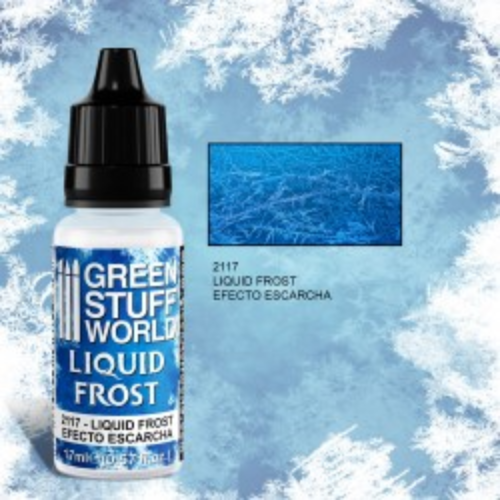
Liquid Frost
This saline solution creates a whitish crystalline structure that simulates the effect of frost. Due to its natural composition, certain external factors such as humidity, temperature, and surface or structure where it's applied, can affect the formation of frost.
It can imitate the frost on trees, bushes, flowers, crystals and even imitate other crystalline formations.
Apply multiple layers and leave to dry between 4 to 24 hours. Subsequent applications could reactivate the crystallization process and make them grow. Can be cleaned with water if necessary.
The effects may differ depending on whether it is applied by brush or airbrush. In airbrushing it is recommended not to apply too thin layers since crystals will not form. It can be diluted with water but the crystals that form would be weaker.
Contains 17ml.
Warning
- The use of other products over the cured frost, such as paint, varnish or lacquer can affect the crystals. Once crystallized, if dampened, they could melt or simply weaken the crystals. Depending on the product used, they can crystallize again.
- Porous materials such as natural wood, MDF wood, cork, cardboard, etc can absorb the medium of the product, canceling the effect of the liquid frost. These materials must be sealed before applying the liquid frost.
- In the case of obtaining crystals, if you want to increase their hardness, you can use cyanoacrylate glue in liquid format and apply through capillarity. By doing this, some crystals may lose some detail if they are not well formed or attached. Using too much glue could release cyanoacrylate fumes.
- In case you want to dye the crystals, it should always be done through capillarity, and it is recommended to fix them before to affect their structure as little as possible.
